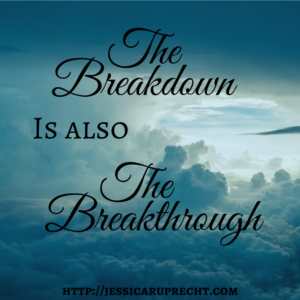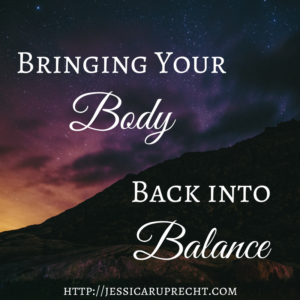 Years ago at a college party someone remarked to me that drunk people walk like this: fine, fine, fine, fine — oh sh*t, falling. Parties were really never my scene, but that image stuck with me and I remember it to this day because it seemed like a really good metaphor.
Years ago at a college party someone remarked to me that drunk people walk like this: fine, fine, fine, fine — oh sh*t, falling. Parties were really never my scene, but that image stuck with me and I remember it to this day because it seemed like a really good metaphor.
I think for a lot of us life goes something like this: fine, fine, fine, fine — oh sh*t, falling apart.
I know it goes this way for me sometimes.
Sometimes that’s just the way things are. Sometimes life is unexpected and hard and we didn’t want it to be this way and then suddenly it is and we’re falling apart. Sometimes it’s all beyond our control.
But sometimes I think there’s something else at play — sometimes I think it’s the same for us as it is for the drunk person: we’re trying so hard to prove something (that we’re doing okay, that we’ve got this, that we’re fine, no really) that we don’t see our downfall coming until we’re landing on our face.
The truth is that pretending works for a while — right up to the point where I start to feel a just a little more confident, start to think that maybe this time I’m going to get away with it… And then it catches up with me and I trip spectacularly over how not-okay I’ve been all along.
I’ve been thinking about this recently in the context of chronic pain (but the lesson applies more generally) — because about a month ago I spent a week walking in Wales with a friend and experienced seven glorious, pain-free days and because my back wasn’t hurting and I was tired from walking, I actually slept. Which is to say that by the end of the week I actually felt kind of amazing.
It’s been a very long time since I felt amazing. So long that I had mostly forgotten what amazing feels like.
And then I came back to Boston and my back started hurting and I stopped sleeping well (the two go together for me), and all of a sudden there I was: tripping over how not-okay I was and fraying apart at my edges.
I’m not even sure that the last four weeks have been worse than “normal” — I think maybe it’s just me that’s changed. Because I’d forgotten what it was like to feel good, until suddenly I did.
In the end it doesn’t matter: the truth is simply that I am in need of a new “normal”, that I am no longer willing to push on as I have been.
Somewhere in the last four weeks my strength for fighting through being in pain ran out. All of my toughness disappeared on me.
This is what the breakdown looks like.
It’s not always loud and messy and tear-soaked. Sometimes it’s quiet and gentle.
But here’s the thing: I’ve fallen down and out and over enough times now to know that the breakdown can also be a really, really good thing.
Because reaching the end of your rope is always immediately and immensely clarifying.
You thought you still had some wiggle room, but then suddenly there it is: the end of your pretending leaves you with nowhere left to hide from your truth.
It’s terrifying and terrific: the breakdown is also the breakthrough. Or at least it can be if we’re willing to let it be both.
I used to be so afraid of falling apart that I never learned how to let the breakdown become the breakthrough. Whenever I felt myself falling apart, I did the only thing I knew how to do: I held on to anything I could reach as tightly as I could, to try and keep the pieces of myself together.
But in order to get to the breakthrough we have to stop pretending.
We have to hit the bottom and let ourselves shatter a little.
We have to stop to take a really good look around, instead of immediately getting up and heading on our way — hoping that no one noticed our stumble.
The breakthrough demands our curiosity, our willingness to linger, to take stock of what hurts and what’s broken and what are we no longer willing to put back together.
What is true for me today is this: I am no longer willing to be tough on pain.
What is true for you will inevitably be different. Your breakdown and your breakthrough are yours, and yours alone.
But you’ll know when you’ve found the truth you’re looking for because it will land in your body with a thump, an almost-visceral sensation that lies somewhere between a punch to the gut and an enormous sigh of relief.
And if you thought that getting to this knowing was the hard part, I have unfortunate news for you. The truth is that knowing is only the first step that makes the journey possible.
Insight without action is really just another form of hiding. And (because the truth is always a paradox…) there’s really nothing wrong with hiding.
It’s okay to be not-ready.
Just be honest with yourself that not-ready is where you’re at. Say: not today, but maybe someday — and let yourself sit with that.
Someday you’re going to be ready and, when you are, you’ll get to face the scariest part: the part where you take your knowing and you use it to reshape your life around some new principle you’ve never lived by before.
For me, today, that new principle is this: I want to be soft with pain. Wherever pain shows up I want to meet it with gentleness.
None of this will be easy. Change never is.
Our lives aren’t designed to accommodate the messiness of our human needs.
To be soft with pain I’ll have to make changes at work and at home, I’ll have to have uncomfortable conversations with managers and untangle old habits to make space for new ways of being.
Being soft on pain demands that where pain shows up I will pull up a chair and give pain its very own seat at my table. It demands that I carve out new spaces in my life, to make room for pain to be present and to allow pain to have whatever it needs.
And the very worst part: I have no idea if any of this will be “worth it”. I have no guarantee that any of this will “work”.
After seven years of chronic pain, I live perpetually in a state of both really believing that not feeling this way is possible, and not really believing that any particular change will be the one that finally makes a difference. (I keep making them anyway, because you really never know…)
But what I do know is that I’m tired of fighting with pain and I can choose to put my weapons down.
The pain may or may not go away — but I can choose today to end the war.
Because today I am willing to admit that sometimes our strength lies not in our toughness but in our softness. In our willingness to lay down our arms and let what is true for us right now matter more than any story we might have about who, what, or how we are supposed to be.
At the end of the day, this is always the real breakthrough: the moment we choose to end our war with reality and turn instead toward allowing what is to shape us into the people we are ready to become.
Much love,
Jessica
 The highest priority of body and brain are to protect you from danger and remove you from stressful situations.
The highest priority of body and brain are to protect you from danger and remove you from stressful situations.